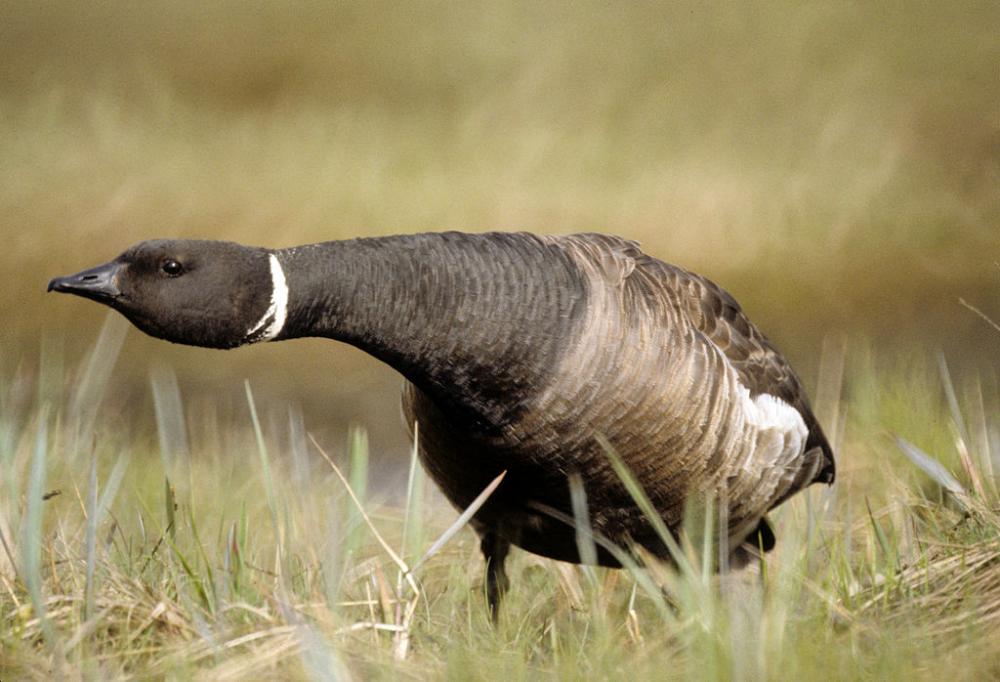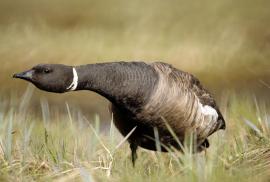Guide to Boreal Birds
Overview
In the 1930s a disease virtually wiped out eelgrass, until then the favorite food of the Brant, and numbers of this species declined sharply. The survivors switched to the seaweed called sea lettuce. Eelgrass is abundant again in coastal bays, and the numbers of Brant have risen; there are now more than 100,000 wintering on the East Coast, and more than 150,000 on the Pacific Coast. These geese usually spend the winter in very large flocks, feeding on mudflats, constantly uttering their low, muttering calls. Migrating flocks can be identified at a great distance as they travel in erratic, constantly shifting bunches unlike the V-shaped flocks of Canada Geese or the long curved lines of Snow Geese. Many are shot by hunters each year, but a greater danger to the species is the steady loss of winter habitats to encroaching civilization.
Description
22-30" (56-76 cm). Similar to Canada Goose but smaller, shorter-necked, darker, and lacking conspicuous white cheek patch. Dark brown above with black head and neck; white collar on neck, less conspicuous in Atlantic birds which have whitish bellies and flanks; West Coast birds have dark bellies and were formerly considered a separate species, the "Black Brant."
Voice
A low guttural ruk-ruk.
Nesting
3-5 dull-white eggs in a large mass of moss and down, placed on the tundra. Often nests in loose colonies.
Habitat
Tundra and coastal islands in the Arctic; salt marshes and estuaries in winter.
Range/Migration
Breeds in coastal Alaska and Canadian Arctic. Winters along coasts south to California and Carolinas. Also in Eurasia.



